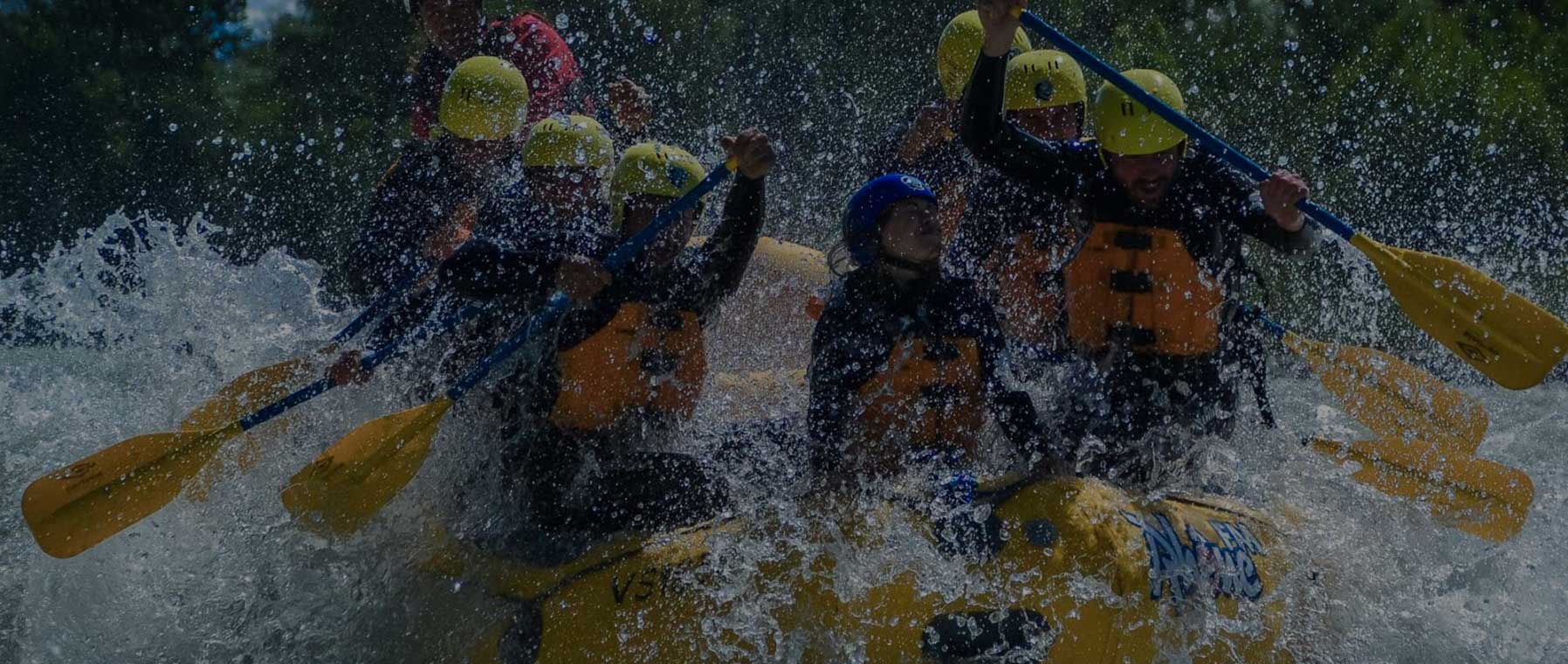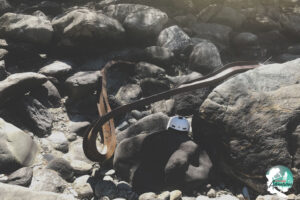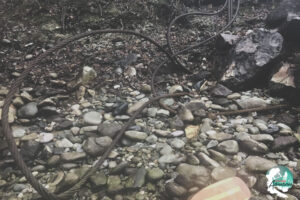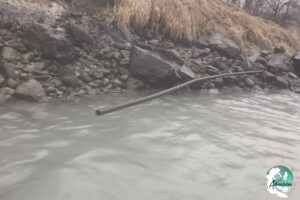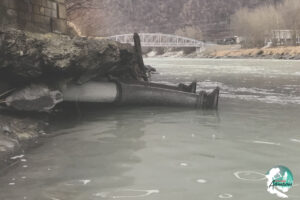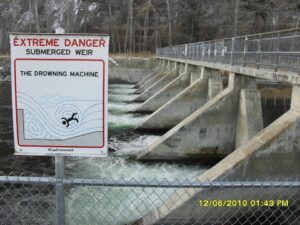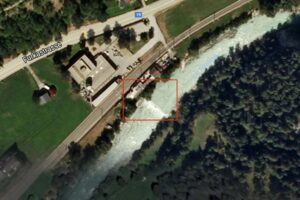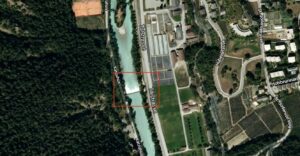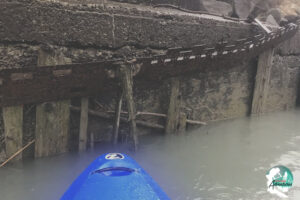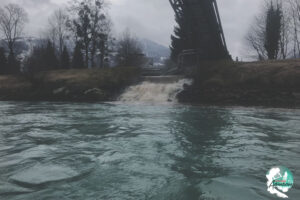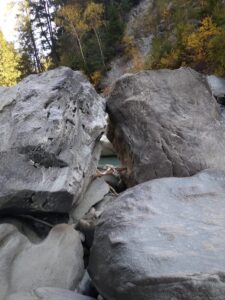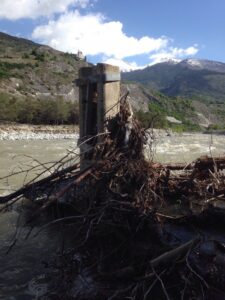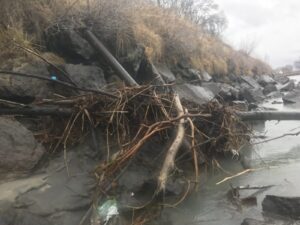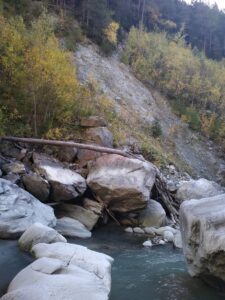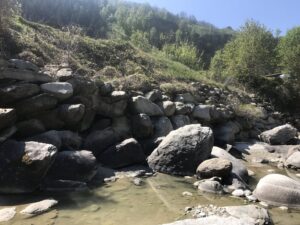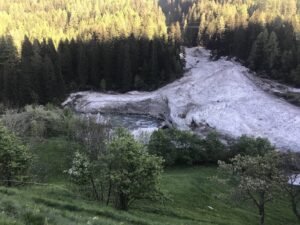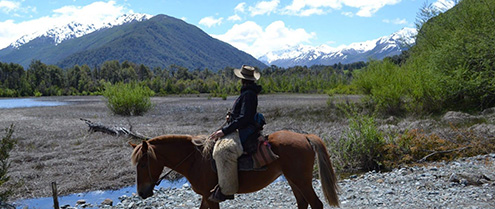21 Nov The dangers of the river
The dangers of the river
The river, like any natural environment, contains dangers. Natural or artificial, these are not always visible and are sometimes difficult to anticipate. They have been divided into two categories and are not exhaustive.
Artificial hazards
Scrap metal
Rivers have often been the dumping ground for bridge and road repairs in the past.
Under the bridges and over an area of 100 metres downstream, debris, reinforced artificial slabs and cables are often found.
Natural disasters, landslides, road destruction are also a cause of metal debris being deposited in rivers.
The most common types of metal debris encountered are piles, cables, road rails and building site DINs.
To avoid them: Unfortunately, they are difficult to spot. Beware of bridge piers, under bridges and 100 metres downstream, and when crossing towns. Stay in the middle of the river. If in doubt, disembark and carry.
Artificial thresholds
To protect a bridge or structure when a river meanders, artificial weirs are created to slow down the water. This can create a life-threatening backwater phenomenon.
The main danger of these sills is that they don't seem dangerous. The water is calm, but a real washing machine that can hold someone trapped underwater is hidden there. See this film.
A tragic accident related to sills on the Kander had cost the lives of military personnel in Switzerland.
These weirs are also harmful to fish as they can no longer swim upstream.
In the Valais, more and more artificial weirs are being demolished or constructed in order to limit the backwater phenomenon and to re-naturalise the watercourse.
To avoid them: if you see a line on the horizon, get off the boat, go and look and if in doubt, carry.
Bridge batteries
Bridges with their "feet in the water" are an obstacle for the current and therefore for the material transported by the water. In addition, objects fall off the bridges and get stuck on the piers.
Wood often gets caught in the metal debris, adding to the danger. Bridge piers should be avoided when rafting or kayaking under them.
To avoid them: stay in the centre on a clear water line. If in doubt, land and carry.
Pollution
Less visible but devastating for the ecosystem, pollution is also a danger for sailors if they absorb contaminated water.
These come from water discharged from a chemical plant, from the discharge of manure into a stream, or from the contamination of groundwater.
Pollution can be recognised by its smell and colour.
To avoid them: usually by the time you detect it, it's too late. Get away from it as soon as possible.
Natural hazards
Rivers are alive and change according to the intensity of the seasons. Frost can break up blocks and cause rockslides ending in a river, tree branches loaded with snow and with the help of the wind break off and fall into the riverbed, trees end up in the river, especially in mild winters. Avalanches cover the riverbeds, logjams are formed from branches and trunks. All these dangers are natural and can occur, dam or not.
These hazards are actually quite similar to what can be found in the mountains!
Siphon
A siphon is a natural tunnel created by boulders or erosion in limestone or conglomerate. A swimmer or a boat could get stuck in it.
To avoid them: In general, siphon areas are mentioned in the guidebooks. Before doing a river, find out about the geology and morphology. Conglomerates and limestone or a waterlogged valley often means that there will be siphons. If this is the case, do some scouting and don't go through everything on sight.
Log jams
Sometimes, when many branches and trunks fall into a river and get swept away, everything gets blocked in one place, a meander or gorge, creating a natural dam.
In the meanders of a river, there is almost always wood accumulated in greater or lesser quantities. The corners of the meanders must be avoided at all costs.
Metal debris is also a source of ice jams as wood can get caught in it. The risk of the river overflowing is high and when the jam breaks, the damage due to the sudden rise in water level is considerable. In comparison, a dam that opens its gates in an emergency will raise the water level rapidly but gradually. An ice jam that breaks will suddenly release the water and all the accumulated wood.
To avoid them: Stay in the centre of the meander bends, if you come across a logjam, carry on and observe if it destabilises and risks breaking. If in doubt, get out.
Landslide
A rockfall or the dislodging of a riprap can cover a watercourse and create siphons. A rockfall also releases freshly broken and therefore sharp rocks, dangerous for a boat and its navigator(s).
To avoid them: disembark and carry.
Avalanches
The slopes of the Alpine valleys are characterised by avalanche paths which can reach the stream of the talweg and block it, creating a huge ice siphon.
In the case of a large avalanche, the snow has often carried away tree trunks which are deposited in the watercourse. This natural hazard is very important. If a gorge is located shortly after the avalanche paths, there is a high probability that tree trunks will be trapped there. Be careful before you enter the gorge!
To avoid them: Observe your route before starting to navigate. Avalanches can be seen from quite a distance. Go ashore beforehand and observe the avalanche. If the avalanche is large and woody and a gorge follows it, do not enter it without first recognising it on foot. If this is not possible, give up.
For further information: www.riverexpertise.ch




